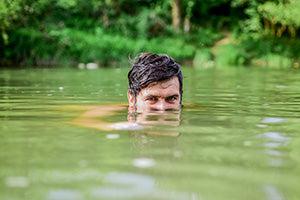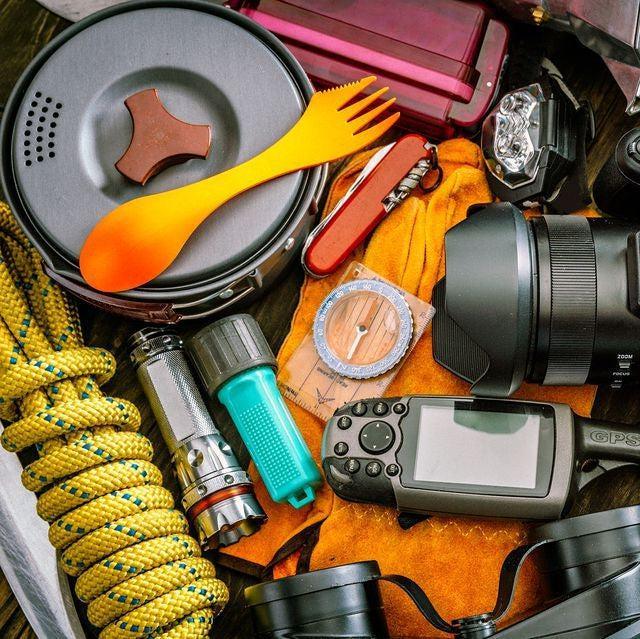
How To Track Someone In The Wild
Share
Tracking someone in the wild is a useful skill that has many broad life applications, as it teaches us to take in the big picture first and then hone in on the details.
While we may never have to track down a fleeing criminal in the wild, a situation may arise where having the skills to track someone is a matter of life or death.
For instance, a child who wanders out into the wilderness, but doesn’t come back will require tracking to pinpoint their location.
From preparation, looking for tracks and signs, and remaining on the correct trail, tracking is both an art and science that requires patience, persistence, and practice.
Related: How To Cover Your Tracks When SHTF
Preparing To Track Someone In The Wild

Preparing to track someone in the wild is a prerequisite that greatly increases the possibility of finding the target. First, acquire all the pertinent information regarding the target including their shoe size, what type of shoes they are wearing, weight, height, the supplies they have with them, their skill set, and their motives.
After that, learn as much about the environment where the target is likely occupying before entering it. What type of terrain does this environment consist of? Which are the impending dangers specific to this environment? What is the weather like and are any storms expected to roll through the region?
If possible, secure a map of the area, prepare all supplies for the trip, including a camera, a notepad for notes and drawings, and a compass. If given the luxury of resting and eating before heading out into the wilderness, take advantage, as this will greatly improve stamina and morale.
Where To Start Tracking Someone In The Wild?
After gearing up for the trip, start by entering the general region where a target is expected to be and scan the macro environment. Then, look for any specific tracks and signs, otherwise known as spoor, and go from there.
Ideally, start looking for spoor in terrain that is muddy or sandy, as footprints are easier to spot. Then, move to other areas, if no clues can be found initially.
Related: How To Identify Animals By Their Tracks (With Pictures)
What Spoor Are We Looking For?

The best tracks and signs are footprints, as they can easily be followed to a target’s location. However, footprints aren’t present in all environments.
Additionally, a subject that does not want to be tracked often spoofs their footprints to push a tracker off their trail.
Other tracks and signs to look for include bent grass in one specific direction, broken branches, overturned rocks, and excrement or trash.
Additionally, fruit trees that looked like they were picked from recently, a man-made shelter, a lack of animals in the area, traces of blood, and broken spider webs all indicate that someone was recently in the area.
Broken spider webs are one of the best clues that can indicate how recently a target was in the area. If spider webs are completely broken, a target was recently in the area, often within the hour. If a spider web is partially re-built, a subject was likely in the area within the last three hours.
Tracking Footprints
Tracking footprints requires knowledge and practice.

An experienced tracker looks for a specific walking pattern, soil scatter, and transfer, meaning dirt from shoes is left on another object like a rock.
All of these clues together can determine how fast a target is moving, whether or not they are carrying heavy objects, and whether or not they are trying to hide their tracks.
For instance, subjects who don’t want to be tracked may walk backward or put their shoes on backward so the tracks are leading in the opposite direction. However, an experienced tracker can tell by soil scatter and compression whether or not a walking pattern is typical.
If tracking a hostile target, always be aware of a potential ambush and tactics designed to throw a tracker off the correct path. When tracking subjects like this, focus on the area 20 yards ahead, move slowly, and diligently look for unnatural changes in spoor, while keeping an eye out for potential traps.
If close to a target, slow down movement and in some cases, stop completely and drop to a prone position to lower the possibility of being spotted.
How To Track A Person In The Wilderness When Footprints Are Faint

When footprints are hard to see but still noticeable, perform a strategy known as side heading to view important details.
When looking at a track from the top, it is often faint, so get close to the ground and look at the track from a side view where ridges and shadows can be seen in detail.
When looking at the track from the side, focus one eye about 1 foot away and focus the other eye at a distance of about 3 feet away. This can offer more information on which way the track is headed and pick up on the next spoor.
Losing Track Of The Target
Losing track of the target is common and requires a tracker to go back to the last known spoor to re-analyze it. There are two common ways to get back on target.

The first involves sweeping the entire area around the last track 360°, searching for the next spoor. The other, called the cross-grain method, involves walking to the right of the last track for about 50 yards and then turning left and walking for about 25 yards. At this point, turn left again and walk about 100 yards.
Then, turn right and walk 25 yards, while repeating the whole process if required. This allows the tracker to search for the next spoor in every direction and ideally pick up the next sign the target left behind.
Using Dogs To Track Someone In The Wild
Using dogs to track a target has its pros and cons. While the overall process of tracking someone with dogs is far easier, the target will also know you are near because dogs loudly make their presence known.
How To Track Someone In The Wild
Tracking someone in the wild comes down to knowledge, properly interpreting spoor, patience, persistence, and practice.
The most important factor is persistence, as a tracker will often find themselves at a loss for a continuation spoor and have to look hard for the next sign to get back on target.


